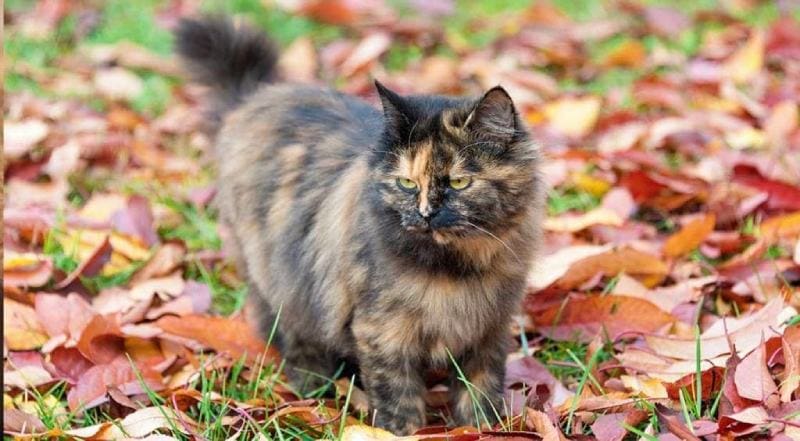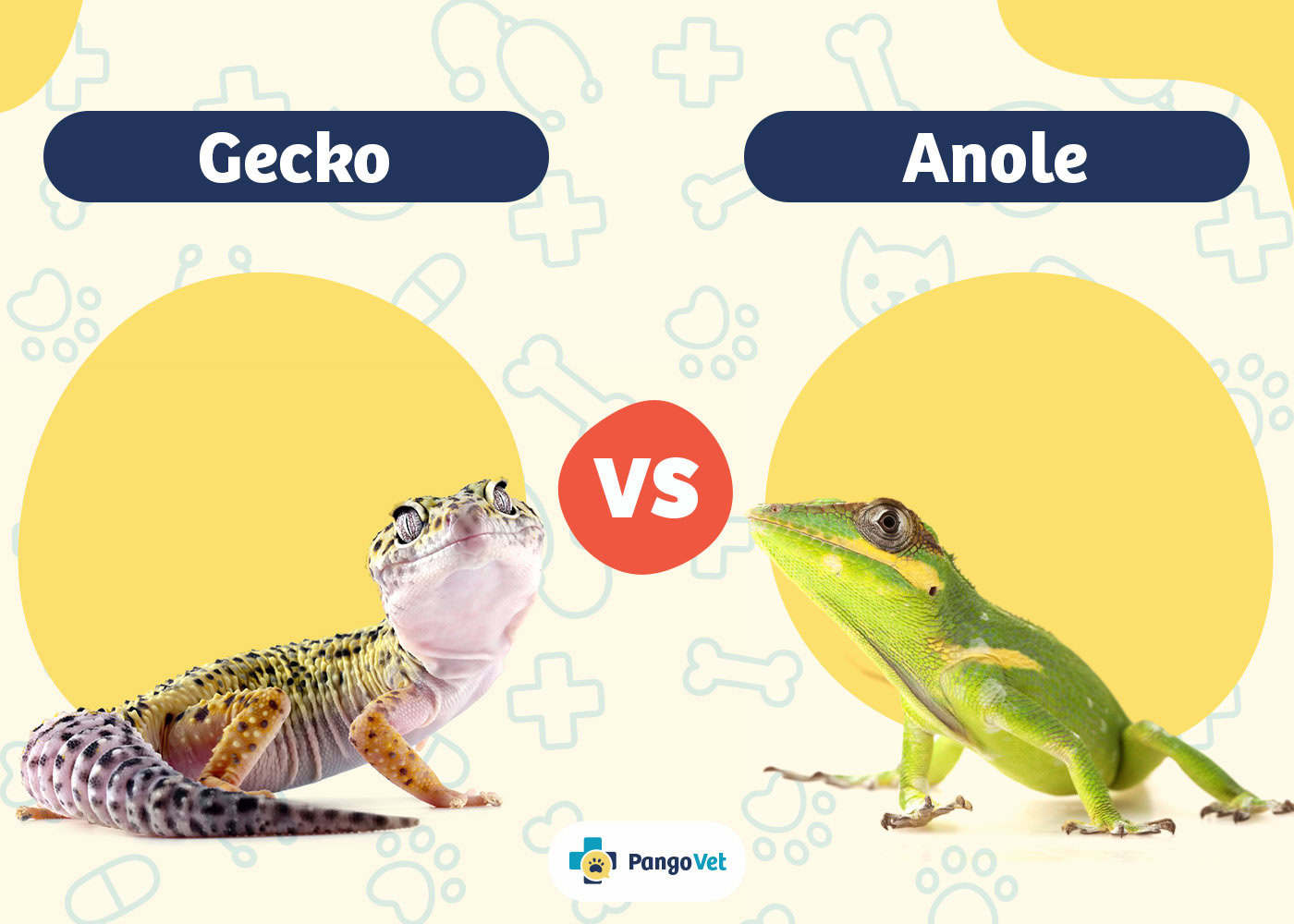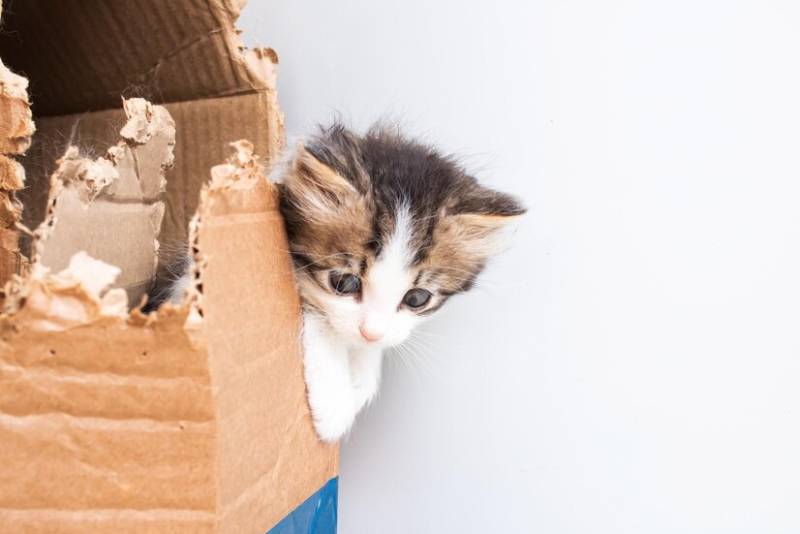VET APPROVED

The information is current and up-to-date in accordance with the latest veterinarian research.
Learn more »Click to Skip Ahead
Are There Any Male Tortoiseshell Cats?
Are There Other Sex-Linked Color Patterns in Feline Breeds?
Which Color Kittens Do Tortoiseshell Cats Have?
Are There Tortoiseshell Cat Personality Traits?
Are There Any Tortoiseshell Cat Legends?
Where Did the Name Originate?
Are There Any Famous Tortoiseshell Cats?
Tortoiseshell cats, or “Torties,” have gorgeous bicolor coats featuring black, chocolate, gray, red, orange, cream, or gold. The color pattern can be found in several breeds, including Maine Coons, British Shorthairs, and Persian cats. Tortoiseshell cats have coats with two patterns; the colors can appear woven together or resemble distinct patches. Because fur color is encoded on feline X chromosomes, sex influences the coat colors and patterns. Most tortoiseshell cats are female. Around one out of every 3,000 torties is male.

How Do Cats End Up With Tortoiseshell Coats?
Dominant coat colors in cats are found on X chromosomes. Female cats have two X chromosomes, so they have the genetic information to express two coat colors. Female tortoiseshell cats have the genes for orange fur on one chromosome and the genes for black hair on the other. During gestation, color expression is turned on and off on a cellular basis in tortoiseshell cats, leading to patches of orange and black or variations of those colors. Males express the color encoded on their one X chromosome.
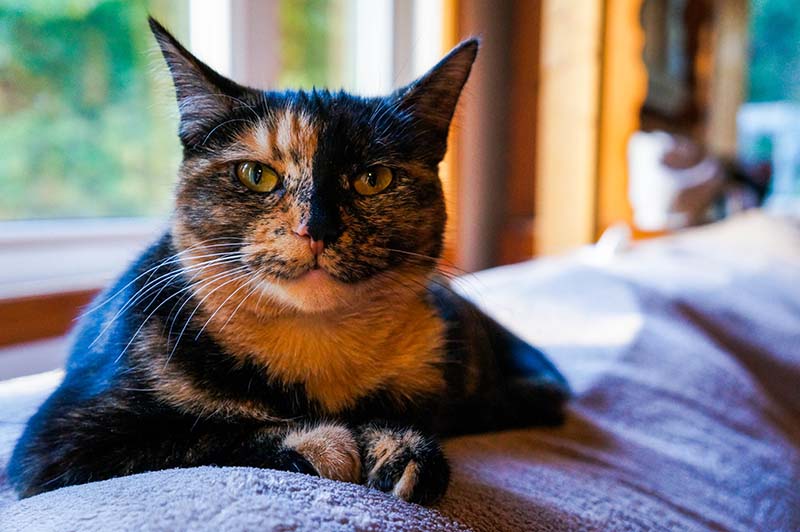
Are There Any Male Tortoiseshell Cats?
Yes, although it’s usually pretty rare. Male cats sometimes have an orange-black bicolor pattern due to spontaneous genetic mutations that happen in the fetal body during gestation. Essentially, a kitten genetically coded to be all-black might have a random patch of orange because a mutation “turned off” the black pigment gene in just one area. If this happens through the body, it can result in a tortoiseshell pattern. These changes occur only in feline skin cells, and the genes these cats bequeath to their kittens usually only contain the information for black fur. This is called a somatic mutation.
Male cats can also end up with the distinctive bi-color tortoiseshell pattern due to chimerism, which is when two embryos mix together to become one. Male tortoiseshell cats can result from the in-utero fusion of an embryo with the genetic information for orange fur and an embryo featuring the genetic code for black fur.
Male cats with an extra X chromosome can also have tortoiseshell coloring if one chromosome has the black fur trait and the other the information for orange fur. Male cats with an extra X chromosome usually can’t reproduce.
Are There Other Sex-Linked Color Patterns in Feline Breeds?
Absolutely. Almost all calico cats are female, and most orange tabby cats are male! Calico cats typically have a combination of three colors: white, black, and orange. Some have dilute coats with chocolate, fawn, gray, or cream patches. Most orange tabby cats, on the other hand, are male. Male cats with the orange coat color trait on their X chromosome are usually orange. Orange female cats have genes for orange fur on both chromosomes. Female orange tabby cats tend to be rare due to the relatively low frequency of orange genes in the feline population.
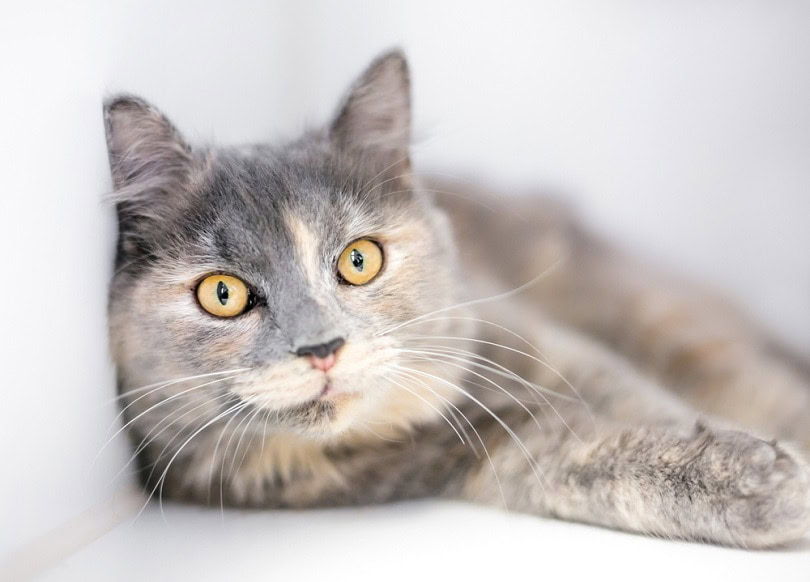
Which Color Kittens Do Tortoiseshell Cats Have?
Female tortoiseshell cats have genes for orange and black fur. Male kittens born to tortoiseshell queens tend to have orange or black fur. Male kittens born to orange queens tend to be orange regardless of their father’s coat color. A tortoiseshell mom and an orange cat dad can also produce orange female kittens.
Are There Tortoiseshell Cat Personality Traits?
Some humans swear their tortoiseshell companions have a bit of attitude. Torties are supposedly quick to express displeasure with clearly ridiculous (according to feline standards) human behavior. Tortoiseshell cats are also frequently described as independent, difficult to predict, and mouthy.
But almost all owners swear their tortoiseshell cats are fun, engaging, loving companions who bring light and love into their homes. A few scientific studies have looked at whether there’s a link between coat color and personality, but no current evidence suggests a strong genetic link between the two.
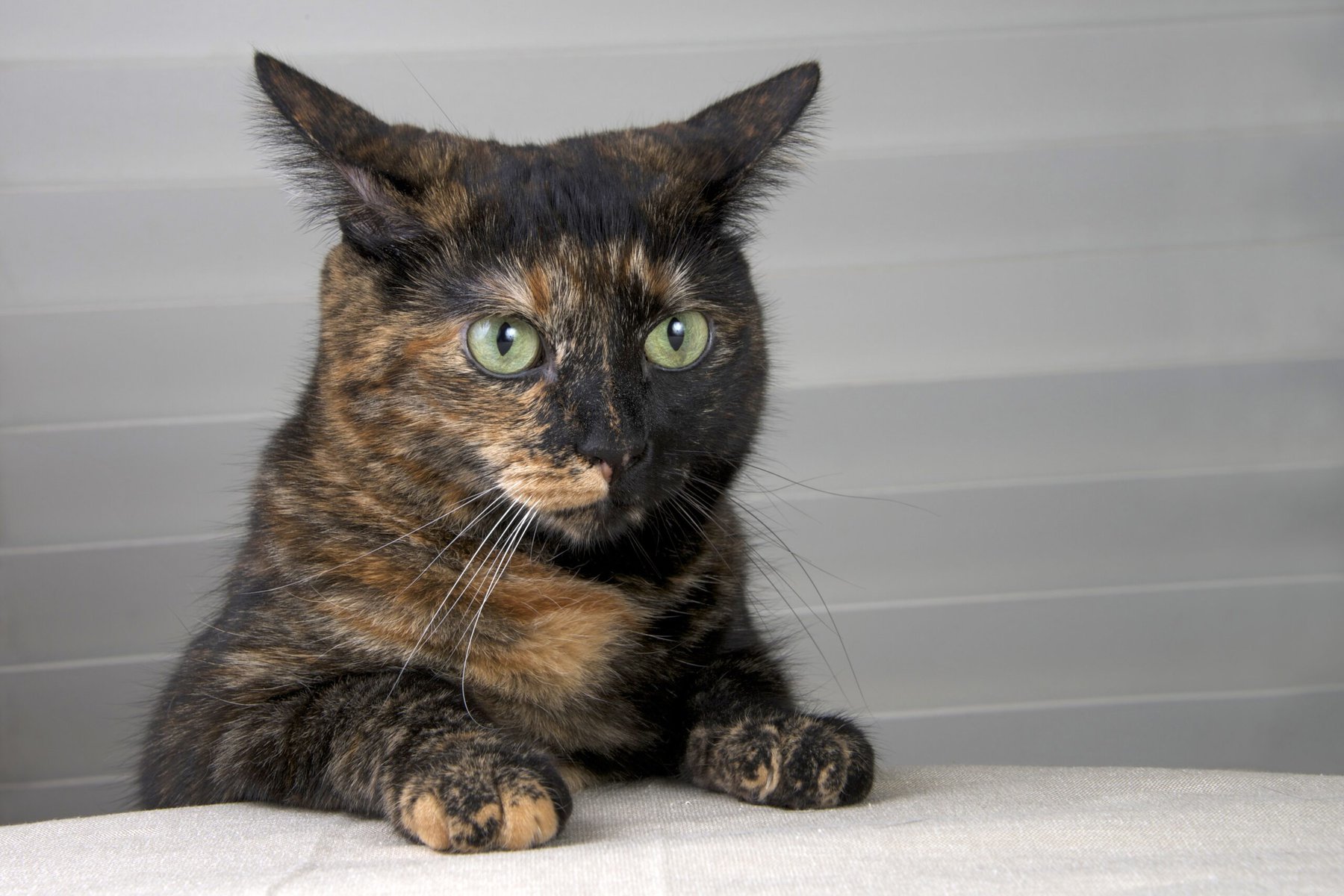
Are There Any Tortoiseshell Cat Legends?
Yes. Tortoiseshell cats are often said to bring luck to their companions. They’re sometimes referred to as money cats! According to other legends, tortoiseshell cats can protect ships from storms if they’re so inclined. And a quick touch from a tortoiseshell cat’s tail is said to have wart-curing powers.
Some swear these cats are psychic, and others claim that dreaming of a tortoiseshell cat means you’ll soon fall in love. Hearing a Tortie sneeze is also considered good luck for brides.
Where Did the Name Originate?
Tortoiseshell cats have coat patterns that resemble real tortoise shells, hence the name. But people only started describing orange and black bicolor cats as tortoiseshell back in the 1970s, when eyeglasses, jewelry, combs, and decorative items made of tortoiseshell were in vogue. However, humans have used tortoise shells as decorative objects for centuries. Various treaties have greatly reduced the international tortoiseshell trade, preventing the extinction of these stunning marine animals.
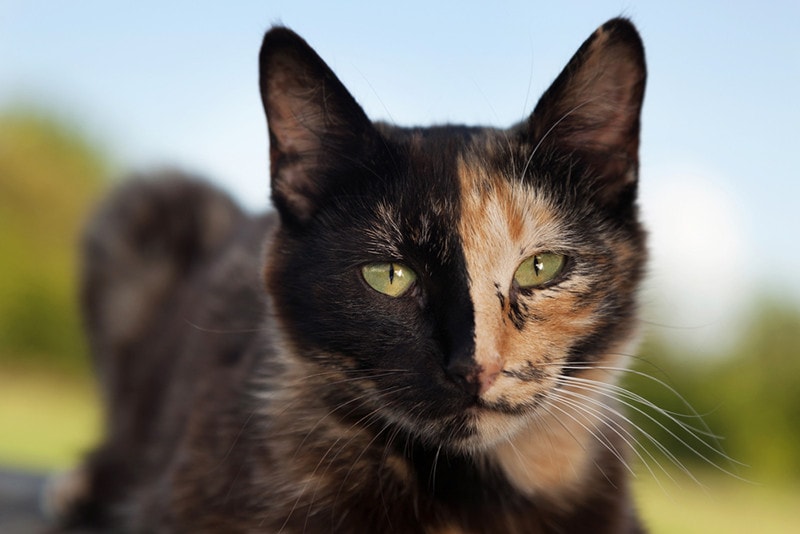
Are There Any Famous Tortoiseshell Cats?
Yes! Edgar Allen Poe had a tortoiseshell cat named Cattarina, who regularly kept her favorite author company as he wrote. She also had a penchant for napping on other beloved household members. Cattarina died just a few weeks after Poe perished in 1849.
Years later, in 2012, two kittens were found on the grounds of the Poe Museum in Richmond, Virginia. Given Poe’s well-known love of cats, the kittens were invited to stay and named Edgar and Pluto. Pluto’s name comes from Poe’s short story “The Black Cat.” The two live at the museum and officially spend their days greeting visitors.

Final Thoughts
Almost all tortoiseshell cats are female, as the genetic information encoding feline coat color sits on the X chromosome. Female tortoiseshell cats have the gene for black fur activated on one chromosome and the gene for orange fur on the second, resulting in their distinctive bi-colored patterns.
There are a few circumstances under which male cats can end up with tortoiseshell coats, including spontaneous genetic mutations. Male cats with two X chromosomes and one Y chromosome can also express the trait, but the cats often cannot reproduce.
- See also: How to Care for a Tortoiseshell Cat
- https://www.bbc.com/news/uk-wales-50208845
- https://figopetinsurance.com/blog/genetics-calico-and-tortoiseshell-cats
- https://www.petinsurance.com/healthzone/pet-breeds/cat-breeds/tortoiseshell
- https://www.smithsonianmag.com/science-nature/judging-a-cat-wrongly-by-the-color-of-its-coat-97549864/?no-ist
- https://www.seattletimes.com/life/pets/study-tortie-cats-tude-is-not-your-imagination/
Featured Image Credit: IMG Stock Studio, Shutterstock
